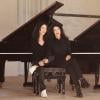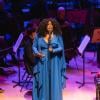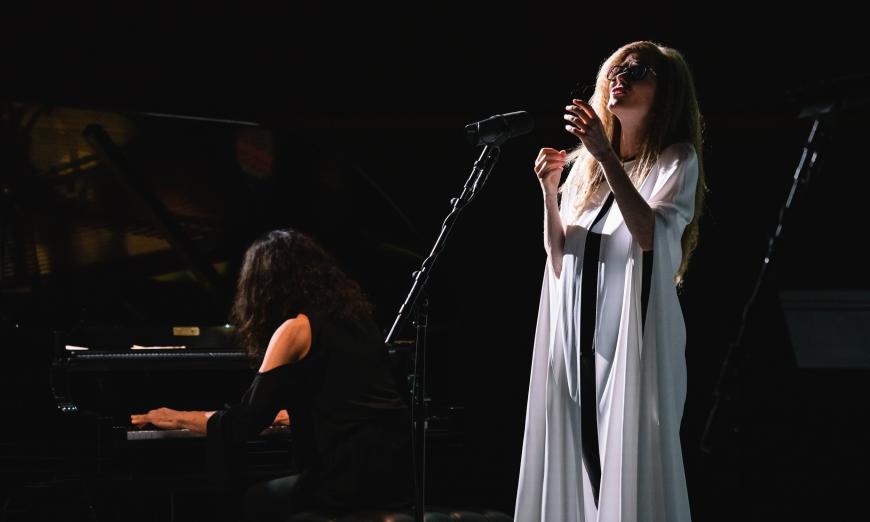
When we were kids, we liked to play a game. We would take two empty orange juice cans, connect them with a string, and stretch them across the yard. Then, one of us would speak into the can, and the other would listen. The voice that came through the vibrating string was muffled and distorted, as if it came from outer space. That game came to mind listening to last Tuesday’s premiere performance of Electric Fields at Walt Disney Concert Hall, presented (belatedly, due to the pandemic) by the Los Angeles Philharmonic.
Composed by David Chalmin and Bryce Dessner for the pianists Katia and Marielle Labèque, the work gracefully reveals itself as a 70-minute immersive experience led by the glittering vocal stylings of soprano Barbara Hannigan as a musical time traveler.
Directed by Netia Jones, with bold black-and-white graphic projections by Lightmap, the work directly references the concept of string theory — whereby an intersection of the space-time continuum along an infinite number of interstellar strings might allow the distant melodic voices of three women composers (Hildegard von Bingen, Barbara Strozzi, and Francesca Caccini) to make their way from the Middle Ages and the Baroque to today.
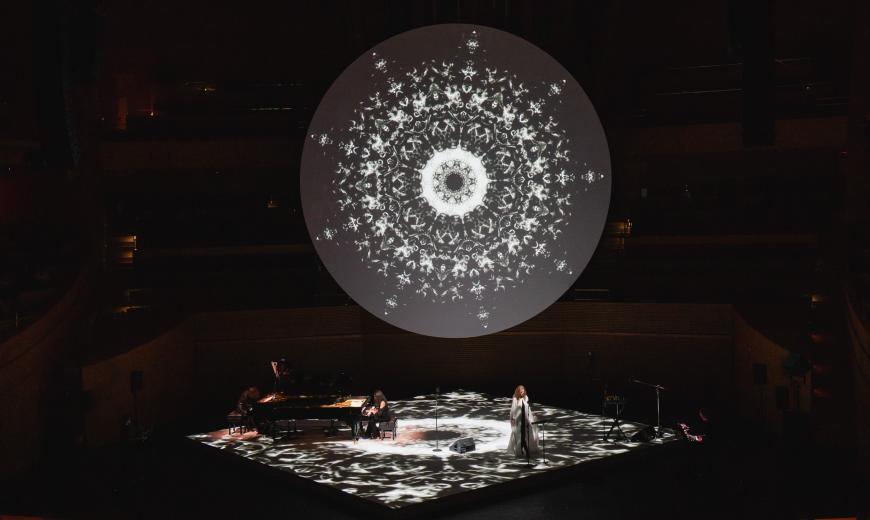
As the audience entered the hall, what it saw was an enormous luminous ring projected above a white square stage and two intertwined black grand pianos. As the lights dimmed, the Labèques entered and took their places facing one another across the dual keyboards. They were joined by Chalmin at a console where he could modulate and control the electronics that play a significant role in the score. But the most striking figure was Hannigan draped in white from head to toe as if to reflect the nun’s habit that Hildegard might have worn in her role as magistra (mother superior) of her order in 1136.
Then, with a low resonating tone, like the radiating sonics from some distant pulsar, the glowing ring became a time portal, revealing an endless vista of billowing and wisping clouds. The pianos entered with a series of lightly fingered dovetailing phrases, distinctly reminiscent of Philip Glass. What we were hearing was “O nobilissima viriditas,” the Latin text by Hildegard, to music by Dessner.
In contrast, Hannigan’s crystalline vocal lines were inspired directly by Hildegard’s sacred antiphons, which illuminate the composer’s ecstatic, mystical relationship to the cosmos — a revelation she described (following her first vision at the age of 3) as “The Shade of the Living Light.” This was “O virga mediatrix,” the text and music by Hildegard, with additional music and electronics by Chalmin.
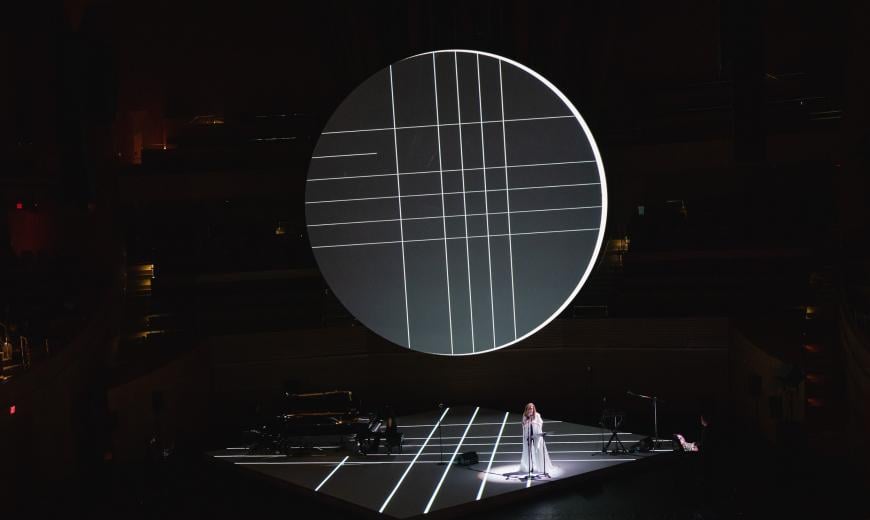
Although the work is conceived as a single movement, it has many chapters under headings like “Research 1, 2, and 3,” in which the two pianos and the interaction between the electronics and Hannigan's vocal lines take on multiple personalities — at times eruptive and percussive, at others serene, meditative, and introspective.
The through line is always given to Hannigan, the work’s melodic star guide and channeler of the past. And there are many times when the electronics are used to phase-shift, modulate, and echo her voice, making it even more spectral. Her words (Hildegard’s words) are also at times projected. “I am the height and the depth, the circle and the descending light.”
A consistent theme is the yin-and-yang relationship between the macro — the infinite expanse of time and space — and the micro — where infinity can be seen in the spirals of a seashell. There are passage when the music expresses grandeur, while other moments are fragile, minute, and fleeting. This perception is particularly well expressed in the Baroque musicality of Strozzi’s “Che si può fare.” What we read: “These harmonics are the language of the soul and instruments of the heart.”
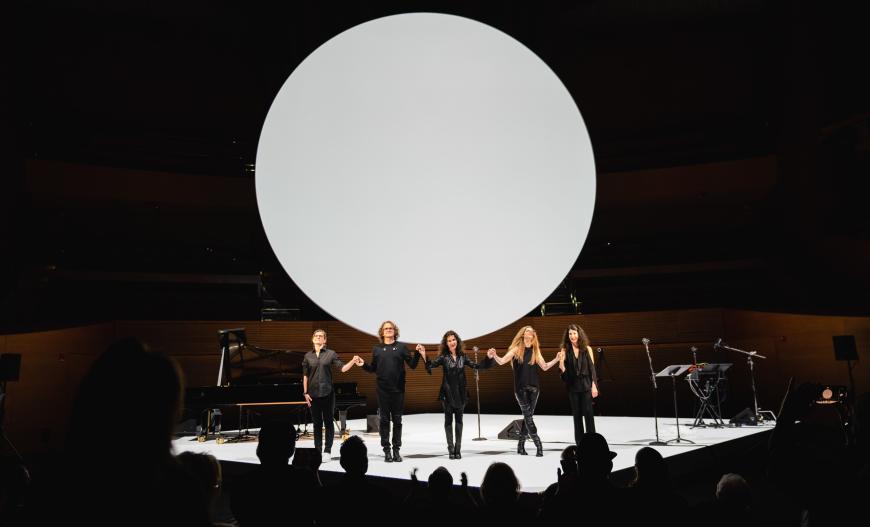
The visual duality of black and white is constant in the projections and most dramatically expressed when Hannigan sheds her celestial white habit to become the lady in black. But there is never an indication that this is a tale of good versus evil. As Hildegard observed in her visionary way, “Humanity, take a good look at yourself. Inside, you’ve got heaven and earth, and all of creation. You’re a world — everything is hidden in you.”
“Spiral Arpeggios,” text (“Lingua ignota”) by Hildegard and music by Dessner, evolved to the concluding “Final Chant,” to music by Hannigan and the gradually disappearing electronics of Chalmin.
Electric Fields is a fascinating journey of outward and inward reflections, of cascading piano lines, and of interstellar, Forbidden Planet electronics, all melded to psychedelic mandala projections. It’s just a shame so few people availed themselves of the opportunity to join in the journey.


